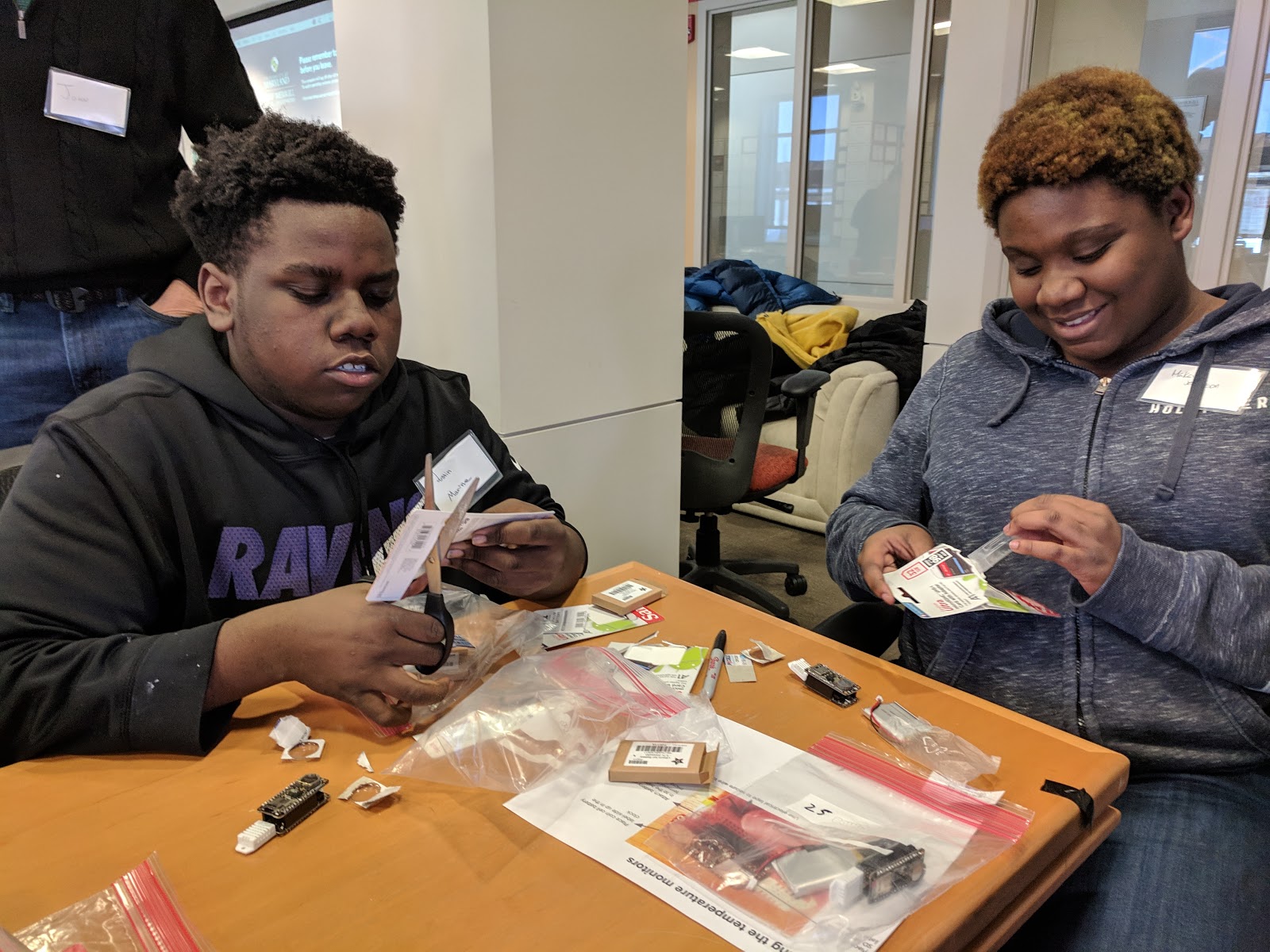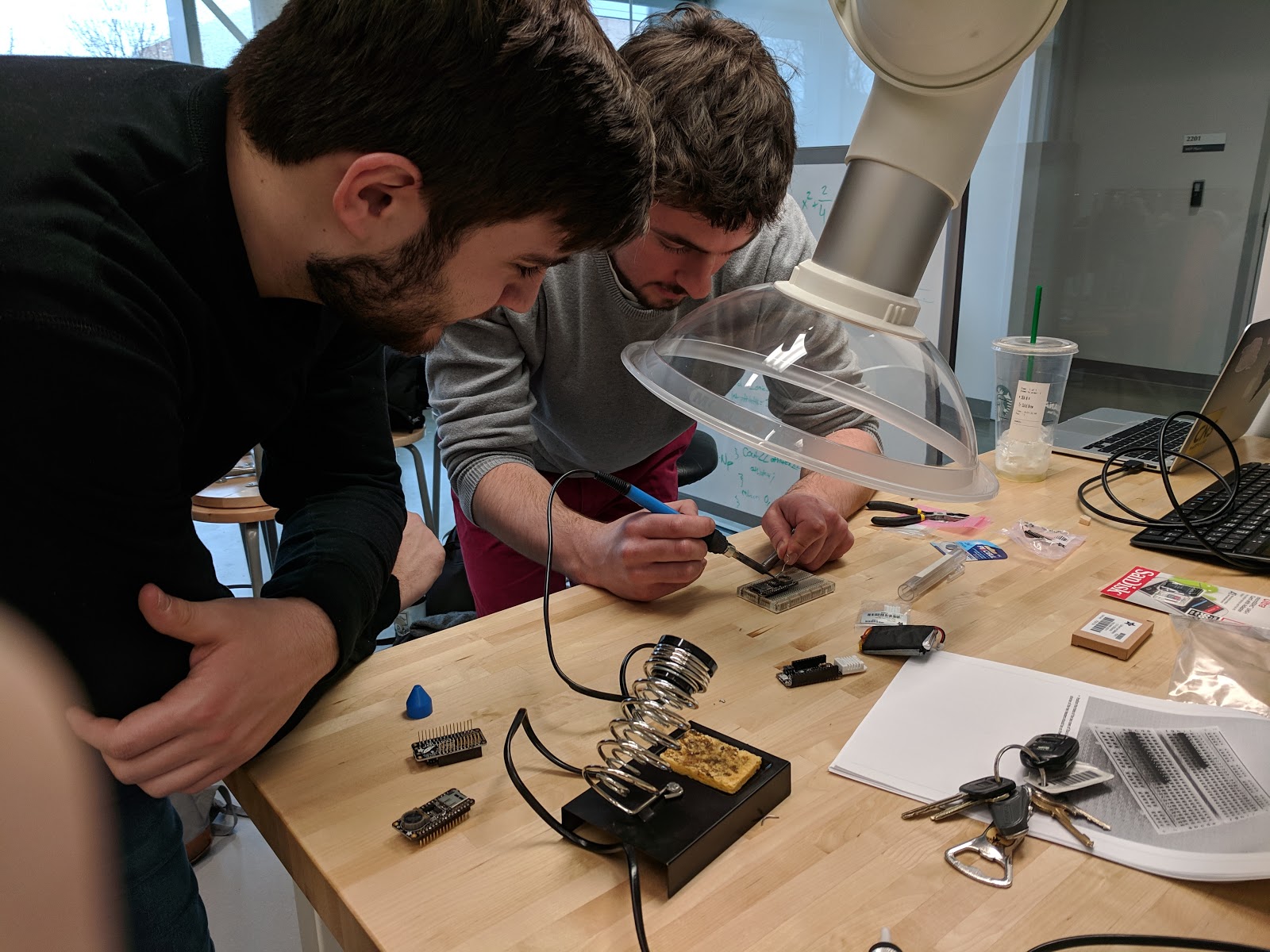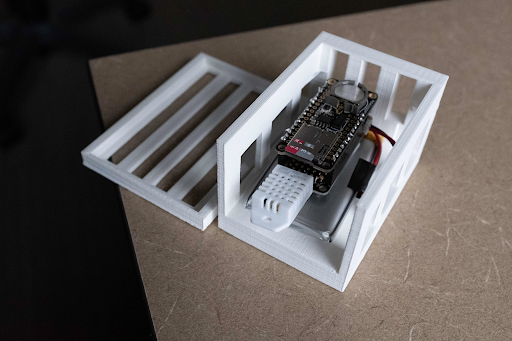Extreme temperatures pose a serious, long-term health threat for people with chronic medical conditions like asthma, respiratory diseases, obesity, diabetes, heart disease, cancer, mental illness and multiple sclerosis. We all know that people die of heat stroke in the summer or of heart attacks after shoveling snow. We know a lot less about the long-term effects on large populations of living in extreme heat and cold. Reporters at the Philip Merrill College of Journalism at the University of Maryland are working with National Public Radio and students at Wide Angle Youth Media in Baltimore on a project to look at how heat and cold in Baltimore homes affect residents' health – particularly as climate change becomes more and more significant. Learn more and get involved.
Building sensors to help communities in Baltimore

By Noah Johnson
Capital News ServiceFebruary 20, 2019
Over the next six months, journalists at Capital News Service will be working on a project that investigates how climate change is affecting residents of low income housing in Baltimore.
In addition to examining publicly available data and field reporting with residents, the CNS team will place temperature monitors in the homes of Baltimore residents. These monitors will quantify the potentially harsh temperatures that residents endure during the hottest and coldest times of the summer and winter. In total, the team has built 40 temperature monitors and will place three sensors in the homes of Baltimore residents who agree to participate. We hope to work with residents in the future to build more.
The CNS team’s usage of sensors is modelled after WNYC and AdaptNY’s 2016 Harlem Heat project that found while temperatures oscillated outside on the hottest days of the summer, indoor temperatures remained unbearably hot. John Keefe, formerly of WYNC and now the head of product at Quartz provided open-source code for the construction and usage of the sensors, which allowed CNS to use the same technology for the Baltimore project.
In order to construct the devices, CNS journalists soldered together the structural components of each sensor while members of Wide Angle Youth Media -- a Baltimore-based youth program that provides media education and resources -- assisted with the installation of batteries, SD cards and temperature cases.
Each device includes a monitor, which is made up of a small computer, temperature sensor, clock, batteries and SD card, which allows the device to record, track and store information. The sensors are designed to activate every 10 seconds and record temperature, humidity, date and time before becoming idle again.

CNS journalists will place each sensor in an unobtrusive, well-ventilated location that does not receive any direct sunlight. Instead of being fastened to a surface, each device will be placed on a surface that is unlikely to be disturbed during the six-month data gathering period..
As a precaution, every device is housed in a 3D-printed case built to prevent damage while the sensors are in use.
Each device includes a monitor, which is made up of a small computer, temperature sensor, clock, batteries and SD card, which allows the device to record, track and store information. The sensors are designed to activate every 10 seconds and record temperature, humidity, date and time before becoming idle again.

After the installation process, journalists will travel to Baltimore every two weeks and record data from each sensor’s SD card onto a password protected database. These visits will also present an opportunity for CNS journalists to examine the data with residents as a way to contextualize the data during potentially extreme weather periods.
CNS is currently working with members of the community and hopes to install the sensors this month. Data analysis will be ongoing for at least six months.





